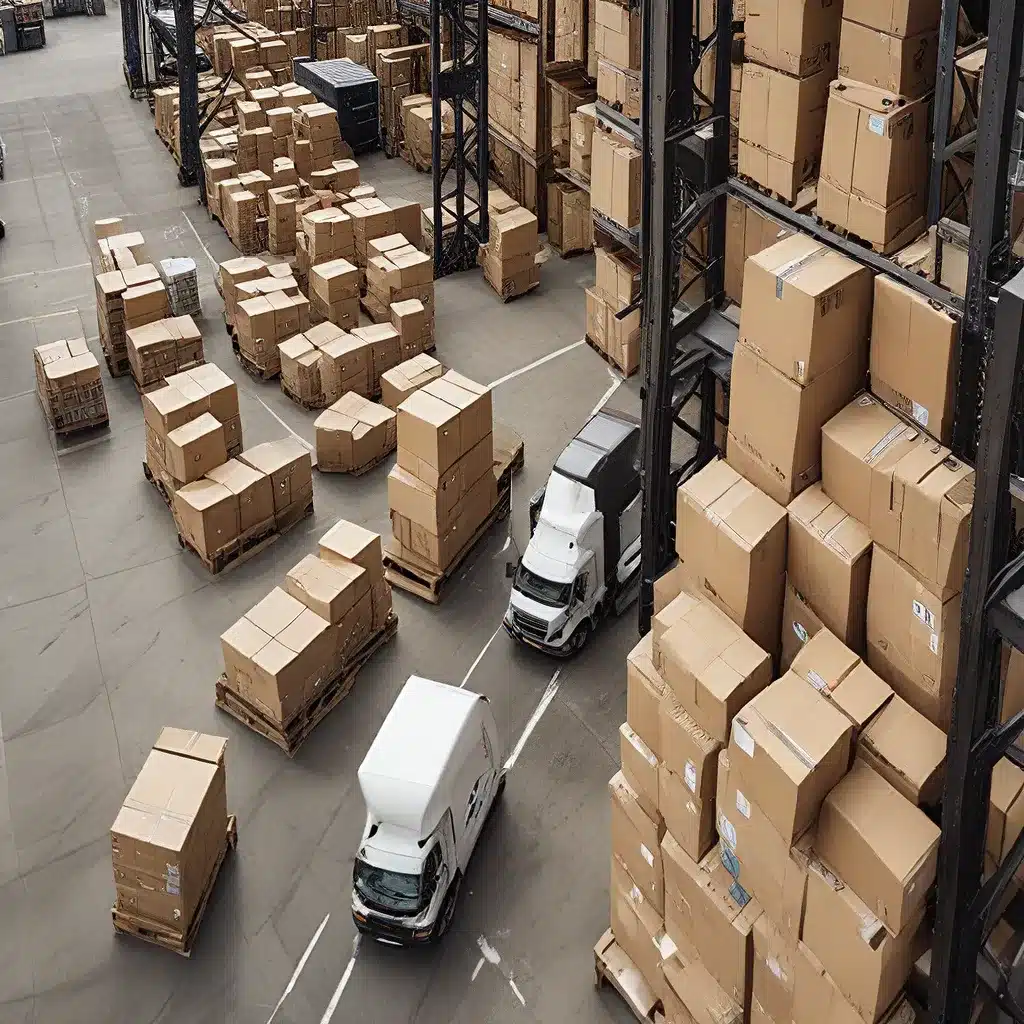
Harnessing the Power of Sensor Networks in Supply Chain Management
In the dynamic landscape of the modern supply chain, sensor networks have emerged as a transformative force, revolutionizing the way businesses manage their logistics and enhance delivery operations. By seamlessly integrating these advanced technological solutions, organizations are now able to streamline their processes, optimize resource allocation, and deliver superior customer experiences.
Sensor Networks: The Backbone of Intelligent Logistics
Sensor networks are the foundation upon which the next generation of supply chain management is built. These interconnected devices, strategically placed throughout the logistics ecosystem, gather and transmit vast amounts of real-time data, providing unprecedented visibility and insights into every aspect of the supply chain.
From monitoring the location and condition of goods in transit to optimizing warehouse inventory and fleet management, sensor networks are enabling businesses to make informed, data-driven decisions that drive operational efficiency and customer satisfaction.
Artificial Intelligence (AI) plays a crucial role in unlocking the full potential of sensor networks within the supply chain. By leveraging advanced analytics and machine learning algorithms, AI-powered systems can process the vast amounts of data collected by sensors, identify patterns, and generate actionable insights that enable proactive decision-making.
Streamlining Inventory and Warehouse Management
One of the primary benefits of implementing sensor networks in logistics is the ability to optimize inventory and warehouse management. Sensors strategically placed within warehouses and distribution centers can provide real-time data on stock levels, product locations, and item movements, allowing companies to maintain optimal inventory levels and minimize the risk of stockouts or overstocking.
AI-driven inventory management systems can analyze this sensor data, along with historical demand patterns and market trends, to forecast future needs and automate replenishment processes. This ensures that the right products are available at the right time, reducing operational costs and enhancing customer satisfaction.
Moreover, sensor-driven warehouse management enables efficient space utilization, optimized item placement, and automated task allocation, resulting in streamlined pick-and-pack operations and faster order fulfillment.
Optimizing Transportation and Delivery
Sensor networks play a crucial role in optimizing transportation and last-mile delivery operations. By equipping vehicles, containers, and packages with a network of sensors, businesses can track the real-time location, condition, and status of their shipments, providing end-to-end visibility throughout the logistics chain.
Automated route planning and dispatch systems leveraging sensor data and advanced analytics can identify the most efficient delivery routes, considering factors such as traffic conditions, weather, and vehicle capacities. This not only reduces delivery times and fuel consumption but also enhances the overall customer experience through more accurate estimated delivery times (ETAs) and proactive notifications.
Sensor-driven fleet management also enables predictive maintenance, allowing companies to anticipate and address potential issues before they disrupt operations, thereby improving vehicle uptime and reducing maintenance costs.
Enhancing Safety and Security
In an era of heightened supply chain risks, sensor networks provide a powerful tool for enhancing safety and security throughout the logistics ecosystem. Sensors can be used to monitor environmental conditions, detect potential hazards, and trigger immediate response protocols, safeguarding both employees and cargo.
For example, sensors can be integrated with video surveillance systems to identify unauthorized access, monitor asset conditions, and detect potential security breaches in real-time. This enables logistics providers to respond swiftly and mitigate risks, ensuring the integrity of their supply chain.
Moreover, sensor-driven supply chain traceability and transparency can help businesses comply with industry regulations and meet customer expectations for responsible and sustainable logistics practices.
Improving Demand Forecasting and Supply Planning
Accurate demand forecasting and supply planning are critical for the success of any logistics operation. Sensor networks integrated with advanced analytics and AI-powered models can revolutionize these processes, providing businesses with unprecedented insights and predictive capabilities.
By capturing and analyzing data from various touchpoints, such as point-of-sale systems, inventory levels, and customer behavior, sensor-driven systems can identify trends, seasonality, and other demand-influencing factors. This enables more accurate forecasting, allowing companies to align their supply chains and resource allocation accordingly, reducing the risk of stockouts or excess inventory.
Furthermore, sensor data can be used to optimize supply planning, ensuring the timely procurement of raw materials, efficient production schedules, and seamless logistics coordination – all of which contribute to a more resilient and responsive supply chain.
Elevating Customer Experience
Sensor networks in logistics not only streamline internal operations but also play a vital role in enhancing the customer experience. By providing real-time visibility into the delivery process, sensor-enabled systems can offer customers accurate ETAs, proactive notifications, and seamless order tracking capabilities.
This level of transparency and responsiveness builds trust, reduces customer inquiries, and enables logistics providers to address any issues promptly. Additionally, sensor data can be leveraged to personalize the customer experience, such as offering tailored delivery options or anticipating individual preferences.
The Future of Sensor-Driven Logistics
As the Internet of Things (IoT) and 5G technologies continue to advance, the role of sensor networks in logistics and supply chain management will only become more prominent. The integration of these innovative solutions will pave the way for even greater levels of automation, optimization, and customer-centric experiences.
Businesses that embrace the power of sensor networks and leverage the capabilities of AI and advanced analytics will be better equipped to navigate the complexities of the modern supply chain, staying ahead of the curve and delivering enhanced value to their customers.
By seamlessly integrating sensor-driven technologies into their logistics operations, organizations can unlock new efficiencies, enhance resilience, and solidify their competitive advantage in an increasingly dynamic and interconnected world.
Sensor-Networks.org is at the forefront of this transformative journey, providing comprehensive resources and insights to help businesses harness the full potential of sensor networks in their logistics and supply chain management strategies.